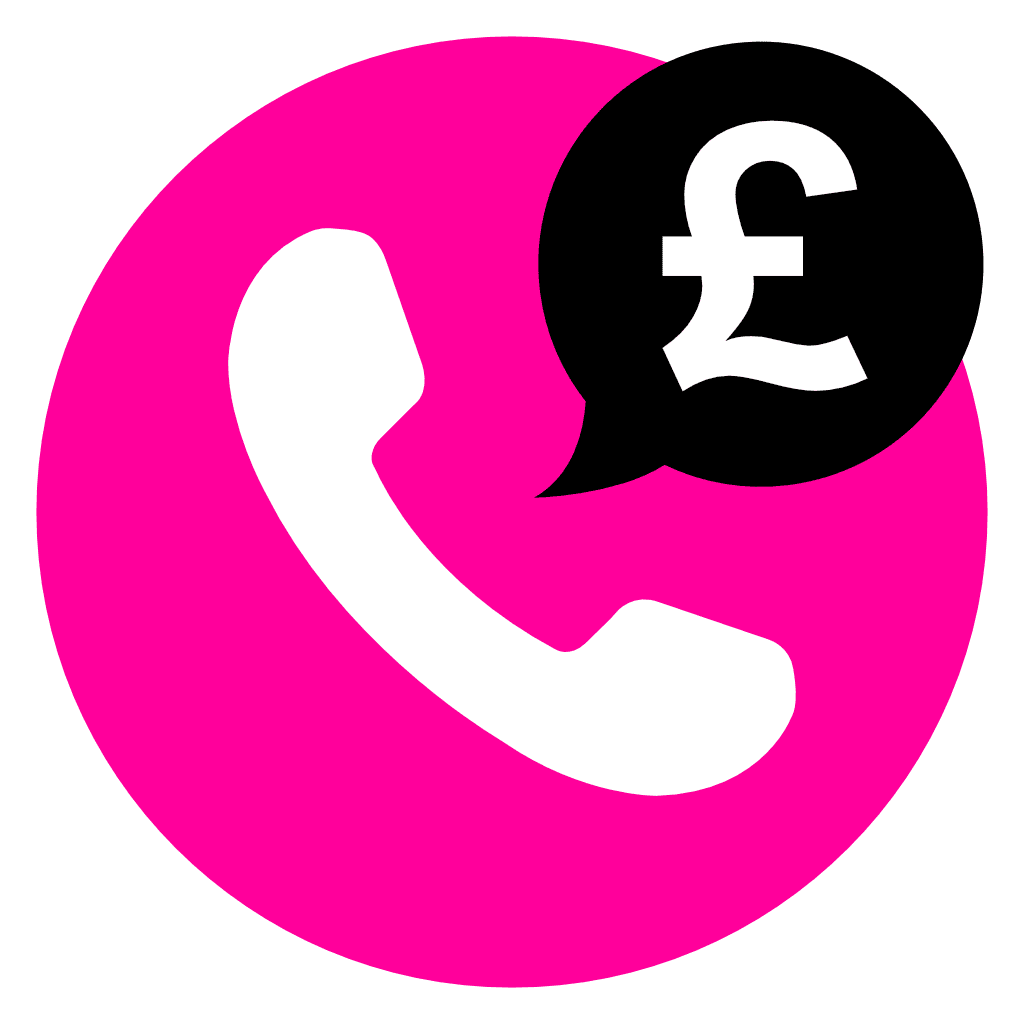Two popular cloud-based communication solutions, Dialpad and Zoom, offer a wide range of features for businesses in the UK, but choosing between them can be a challenge. This analysis delves into a detailed comparison of the features and costs of Dialpad vs Zoom to help UK businesses make an informed decision.
Overview of Dialpad vs Zoom
Both Dialpad and Zoom are cloud-based communications platforms, offering services such as voice, video conferencing, messaging, and collaboration tools. However, they target slightly different user bases and business needs.
Dialpad: Primarily a VoIP provider, Dialpad emphasises smart voice services powered by AI, with additional video conferencing and messaging capabilities. It is designed to integrate seamlessly with other productivity tools such as Google Workspace and Microsoft 365.
Zoom: Zoom is best known for its video conferencing platform but has evolved to include voice services (Zoom Phone) and collaboration tools such as Zoom Chat. It has a reputation for being user-friendly and adaptable for both business and educational settings.
| Feature | Dialpad | Zoom |
|---|---|---|
| Core focus | VoIP and AI-powered voice communications | Video conferencing and unified communications |
| Voice services | Advanced VoIP, AI-driven real-time transcription, sentiment analysis, call analytics, IVR | Zoom Phone: Call management, voicemail, call recording, but lacks AI features |
| Video conferencing | Dialpad Meetings: Basic HD video, screen sharing, integrations, but not as scalable | Advanced features, HD video, breakout rooms, webinar hosting, virtual backgrounds, meeting recording |
| Messaging and collaboration | Basic internal messaging; integrates with Slack, Microsoft Teams, and Google Workspace | Zoom Chat: Unified messaging before, during, and after meetings, file sharing, presence status, Zoom Rooms |
| AI features | AI-powered real-time voice transcription and sentiment analysis | No AI-driven communication features |
| Integrations | Google Workspace, Microsoft 365, Salesforce, Slack, APIs for custom integrations | Google Workspace, Microsoft Teams, Salesforce, Trello, Asana, APIs for custom integrations |
| Scalability | More suited for small to medium-sized teams | Highly scalable for meetings, webinars, and events |
| Security | Standard encryption, SSO, GDPR compliance | End-to-end encryption, SSO, GDPR compliance |
| User interface | Easy-to-use for voice, simple design | User-friendly, intuitive video interface |
| Free plan | No free plan | Free video meetings for up to 100 participants (40-minute limit) |
| Pricing | Dialpad Standard: £12 per user/month Dialpad Pro: £20 per user/month Dialpad Enterprise: Custom pricing | Zoom Free: £0 Zoom Pro: £11.99 per user/month Zoom Business: £15.99 per user/month Zoom Phone: £12 per user/month |
| Best for | Businesses prioritising advanced voice communications and AI-driven features | Businesses prioritising video conferencing and all-in-one communications |
Key features comparison
1. Voice services
- Dialpad: Dialpad shines as a voice-first solution, featuring advanced VoIP capabilities. It includes intelligent call routing, IVR, voicemail transcription, and robust call analytics. Dialpad also incorporates AI-powered voice intelligence, offering real-time transcription and sentiment analysis during calls. These features are ideal for sales teams, customer service departments, and businesses that rely heavily on voice communication.
- Zoom: Zoom introduced Zoom Phone to compete in the VoIP market, offering features like call management, voicemail, call recording, and call analytics. While it is a capable VoIP solution, Zoom Phone does not offer the same level of AI integration as Dialpad. However, Zoom’s strength lies in its unified platform, allowing users to switch seamlessly between phone calls, video meetings, and messaging.
Verdict: If your business prioritises voice communication and needs sophisticated AI-powered voice tools, Dialpad is the superior option. However, for businesses seeking an all-in-one communications platform, Zoom may be more versatile.
2. Video conferencing
- Dialpad: Dialpad Meetings (formerly UberConference) is Dialpad’s video conferencing solution. It supports HD video, screen sharing, and integrations with popular productivity tools. It is suitable for smaller meetings but lacks the scalability and advanced features found in Zoom. For businesses that need straightforward video conferencing, Dialpad Meetings is a solid option.
- Zoom: Zoom is the undisputed leader in video conferencing. It offers features such as HD video, webinar hosting, breakout rooms, real-time polling, virtual backgrounds, and meeting recording. Zoom’s scalability makes it a go-to solution for businesses hosting anything from small team meetings to large webinars. Additionally, Zoom’s reputation for reliability and ease of use has solidified its place as a top choice for virtual meetings.
Verdict: If video conferencing is central to your business operations, Zoom is the clear winner with its advanced features and scalability. Dialpad is sufficient for businesses that require basic video conferencing but cannot compete with Zoom’s extensive capabilities.
3. Messaging and collaboration
- Dialpad: In addition to voice and video, Dialpad offers team messaging through its platform. It integrates with tools like Slack and Microsoft Teams, allowing businesses to use their existing collaboration tools. However, Dialpad’s messaging functionality is not as developed as its voice services, focusing primarily on internal communication.
- Zoom: Zoom Chat is a built-in feature that allows users to send messages before, during, and after meetings. It supports file sharing, presence status, and third-party app integrations. Zoom has also introduced Zoom Rooms, a virtual workspace that enhances collaboration by combining messaging, video, and project management tools.
Verdict: Zoom provides a more comprehensive solution for businesses needing a unified communications platform with robust collaboration tools. While Dialpad’s messaging works well for internal teams, Zoom offers a more cohesive experience across voice, video, and messaging.
4. Integrations
- Dialpad: Dialpad integrates seamlessly with popular business tools such as Google Workspace, Microsoft 365, Salesforce, and Slack. It also supports APIs for custom integrations, making it a flexible option for businesses with specific integration needs.
- Zoom: Zoom’s app marketplace offers hundreds of integrations with tools like Google Workspace, Microsoft Teams, Salesforce, and project management platforms such as Trello and Asana. Zoom also supports APIs for custom development, ensuring it can fit into any business’s tech stack.
Verdict: Both platforms offer extensive integrations, but Zoom has a slight edge due to its larger marketplace and ecosystem.
Dialpad vs Zoom cost comparison
1. Dialpad pricing
- Dialpad Standard: £12 per user/month – Includes unlimited calling in the UK, US, and Canada, SMS messaging, video conferencing, and integrations with G Suite and Microsoft 365.
- Dialpad Pro: £20 per user/month – Adds advanced call analytics, Salesforce integration, and 24/7 phone support.
- Dialpad Enterprise: Custom pricing – Suitable for large businesses with more complex needs, offering premium support, more customisation, and security features.
2. Zoom pricing
- Zoom Free: £0 – Free video meetings with up to 100 participants for 40 minutes, team chat, and limited Zoom Phone capabilities.
- Zoom Pro: £11.99 per user/month – Supports meetings of up to 30 hours with up to 100 participants, social media streaming, and recording.
- Zoom Business: £15.99 per user/month – Allows up to 300 participants, more advanced reporting, and additional customisation options.
- Zoom Phone: £12 per user/month – Offers unlimited calling, voicemail, call recording, and call analytics as an add-on to the Zoom platform.
Verdict: Dialpad and Zoom offer competitive pricing, but Zoom’s free tier is attractive for businesses needing basic video conferencing without an immediate budget. Dialpad offers better value for businesses focused on voice communication, especially with its AI-powered features.
Which solution is right for your business?
When deciding between Dialpad vs Zoom, the key question is what your business values most.
- For voice-first businesses: Dialpad’s AI-powered voice tools, VoIP services, and real-time analytics make it the better choice if your organisation relies heavily on phone communications, such as sales teams or customer service departments.
- For video-first businesses: If video conferencing is crucial for your business’s day-to-day operations, or if you need a robust all-in-one platform, Zoom’s advanced features and scalability make it the superior choice. Its user-friendly interface and feature-rich video meetings are difficult to match.
- For unified communications: Zoom offers a more cohesive experience across messaging, video, and voice, making it an excellent solution for businesses looking for a comprehensive communications platform.
Ultimately, both Dialpad and Zoom have their strengths, but the right choice depends on your business’s priorities and communication needs. By evaluating the features and costs outlined here, UK businesses can make an informed decision that aligns with their goals and budget.
FAQ
Dialpad is better for voice calls due to its VoIP focus and AI-powered features like real-time transcription and sentiment analysis. Zoom Phone offers basic VoIP services, but Dialpad’s advanced capabilities make it ideal for businesses that rely heavily on voice communications.
Zoom excels in video conferencing with HD video, breakout rooms, and webinar hosting. It’s ideal for businesses needing high-quality, scalable video solutions. Dialpad Meetings is more basic and suited for small video meetings but lacks the advanced features Zoom offers.
Both platforms offer team messaging, but Zoom’s is more integrated into its unified communications platform, allowing messaging before, during, and after meetings. Dialpad’s messaging is functional but focuses primarily on internal communications, with integrations like Slack for more robust collaboration.
Both Dialpad and Zoom offer a wide range of integrations with popular tools like Google Workspace, Microsoft 365, and Salesforce. However, Zoom has a larger marketplace of apps and third-party integrations, making it a more comprehensive option for businesses with diverse tech stacks.
Dialpad stands out with its AI-powered voice intelligence, offering real-time transcription and sentiment analysis during calls. Zoom does not have equivalent AI features, making Dialpad the better choice for businesses seeking advanced, AI-driven communication tools.
Both platforms offer competitive pricing. Dialpad’s Standard plan starts at £12 per user/month, while Zoom’s Pro plan is slightly cheaper at £11.99 per user/month. Zoom also offers a free tier for basic video conferencing, whereas Dialpad does not have a free plan for its services.
Zoom offers a free plan with video meetings for up to 100 participants and a 40-minute time limit, making it suitable for small businesses. Dialpad doesn’t offer a free plan, so Zoom is the better option for businesses looking for no-cost video conferencing.
Zoom is renowned for its intuitive user interface, particularly for video conferencing. Dialpad also has a simple interface, but it is more voice-focused. For video-focused communications, Zoom is generally considered easier to use and more accessible for all users.
Both platforms support remote teams, but Zoom’s video conferencing, Zoom Rooms, and integrated chat make it better for remote collaboration. Dialpad’s strong voice features are excellent for call-centre-style workforces or sales teams, but Zoom provides a more unified experience for remote communication.
Zoom is more scalable for large meetings, webinars, and events, supporting thousands of participants and providing extensive collaboration tools. Dialpad is better suited for small to medium-sized teams focused on voice communication rather than large-scale video or webinar hosting.

